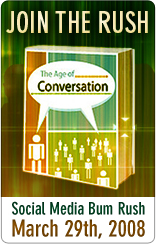When I speak to groups of college students, I can’t help sounding a little frenetic. Concepts and cases spill out of my mouth, and I never fail to leave the classroom elated. Just as surely, a few audience members appear — as they file out — to be feeling the same way. (It could simply be because I stopped yammering!)
I try to wrap up each presentation, whether it’s on database marketing, or web marketing, or new media, with a story from my childhood. A topic that fascinated me was the advent of television. I would read the memoirs of TV pioneers. (My favorite was Dick Cavett’s. He continues to spin great yarns in his blog. A notable recent blog was on his encounters with William F Buckley, Jr., on the screen and off.)
Back when Cavett was a struggling comedy writer, he suddenly found himself replacing Jack Parr on the fledgling Tonight Show, which topped the ratings in its time slot as the first nationally-broadcast talk show. The rest is history. It is also history steeped in the possibilities of a humming, glowing box that was new to households everywhere.
I tell the students how fortunate they are to be born in a time when other revolutionary technologies are emerging (which, together, become a sort of digital connectedness). They, and I, are part of a exciting adventure. This came to mind as I read this, by MediaPost’s Search Insider columnist Gord Hotchkiss (registration required):
We’re building a new world up as we go. More correctly, a new world is emerging organically from the efforts and thoughts of millions of people. It’s a world defined in an ethereal middle space, a world of mind-spawned musings and accomplishments, shared and propelled one packet at a time. We’re not discovering anything, we’re building something entirely new. At any given moment, hundreds of millions of us are making it up as we go along. It’s a Darwinian experiment on a grand, grand scale.
Can you describe to me a better job than being a part of that?


 Back atcha, Noele!
Back atcha, Noele!
